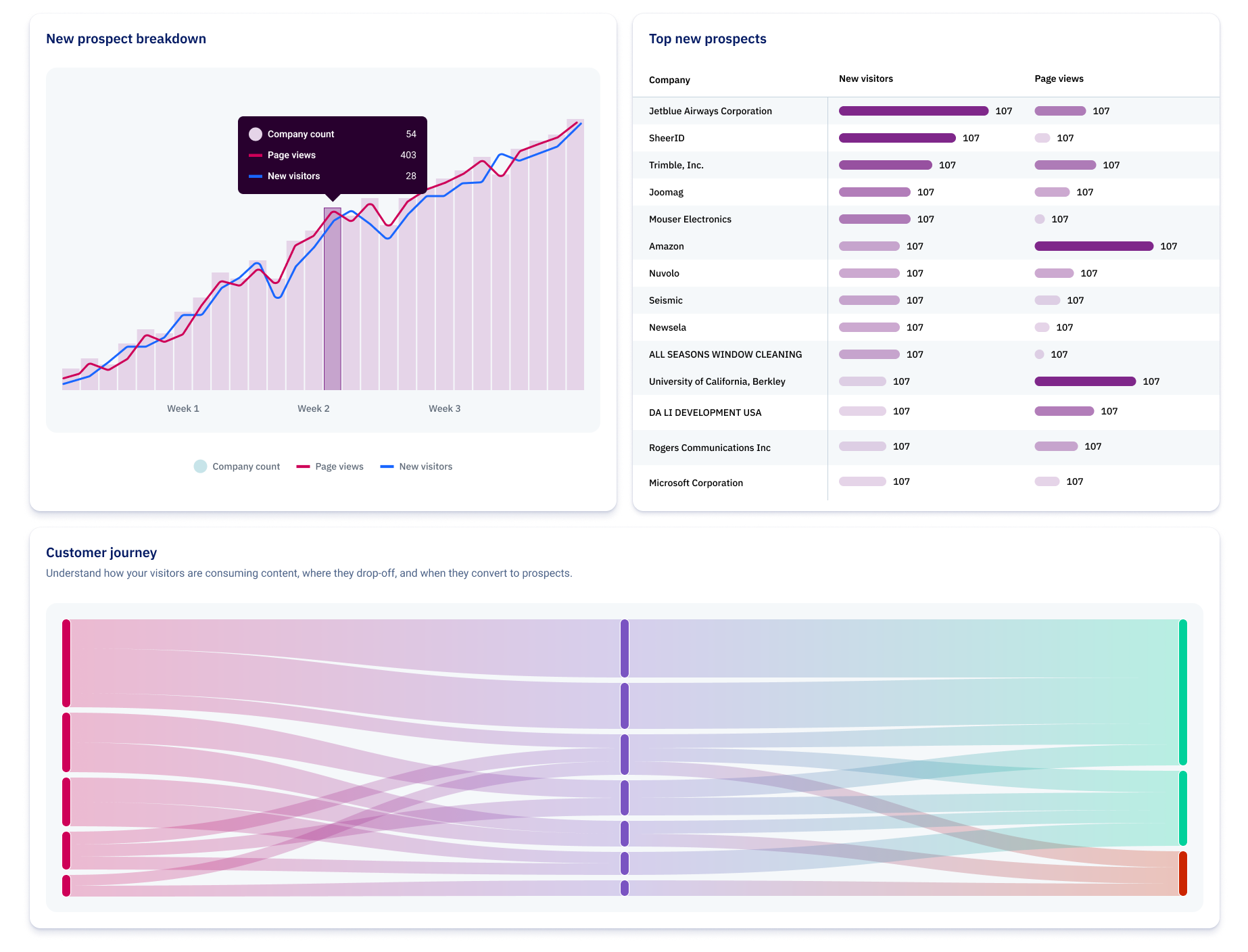
Uberflip: Complete Buyer's Guide
Leading intent-driven content experience platform
Uberflip positions itself as the leading intent-driven content experience platform that transforms how B2B marketing teams distribute and personalize content at scale. Unlike traditional content management systems that rely on demographic rules, Uberflip leverages artificial intelligence and deep intent data integration to deliver dynamic content experiences that respond to real-time buyer signals and account-level engagement patterns[134][141].
Market Position & Maturity
Market Standing
Uberflip occupies a specialized leadership position in the content experience platform category, previously achieving leader status in G2's Content Experience Platforms grid in 2022[145].
Company Maturity
High retention rates among Fortune 500 clients and dedicated customer success management programs that provide response times under 2 hours for critical issues[163].
Industry Recognition
Industry recognition includes documented customer success stories from notable enterprise organizations including Fortinet, Claranet, and NanoLumens[150][152][178][190].
Strategic Partnerships
Strategic partnerships with leading intent data providers including Bombora, 6Sense, and Demandbase position Uberflip within the broader account-based marketing ecosystem[134][141].
Proof of Capabilities
Customer Evidence
NanoLumens provides the most comprehensive validation of Uberflip's capabilities, achieving a 450% lead conversion lift by implementing persona-based content streams across 11 vertical markets[150][152].
Quantified Outcomes
Vendor-reported performance metrics suggest ROI of 3,000% on pipeline value for B2B customers, with 33% higher hot leads and 46% MQL-to-SAL conversion lift compared to traditional distribution approaches[139][154].
Case Study Analysis
Fortinet's crisis response implementation demonstrates Uberflip's rapid deployment capabilities and business agility support, generating over 10,000 visits in 24 hours during a critical ransomware industry crisis[178].
Market Validation
Enterprise customer adoption includes Fortune 500 organizations with high retention rates, suggesting strong customer satisfaction and platform stickiness[163].
Reference Customers
Notable implementations include Fortinet, Claranet, and NanoLumens[150][152][178][190].
AI Technology
Uberflip's AI technology foundation centers on intent-driven personalization that integrates deeply with third-party intent data platforms including Bombora, 6Sense, and Demandbase[134][141].
Architecture
Architecture and deployment leverage cloud-based infrastructure that enables rapid implementation timelines, with basic setup achievable within 30 days and full optimization with intent-data integration completed within 90 days[151][157].
Primary Competitors
HubSpot Content Hub, PathFactory, Jasper[141][157][156][128].
Competitive Advantages
Uberflip demonstrates 40% higher engagement rates through intent-data integration compared to HubSpot's rule-based personalization approach[141][157].
Market Positioning
Uberflip occupies a specialized niche focused on intent-driven personalization rather than competing broadly across content management categories[145].
Win/Loss Scenarios
Uberflip wins when organizations have existing intent data investments, require rapid content personalization at scale, and possess dedicated implementation resources for complex integrations[134][141][151].
Key Features

Pros & Cons
Use Cases
Integrations
Pricing
Featured In Articles
Comprehensive analysis of AI Content Distribution for AI Marketing & Advertising for AI Marketing & Advertising professionals. Expert evaluation of features, pricing, and implementation.
How We Researched This Guide
About This Guide: This comprehensive analysis is based on extensive competitive intelligence and real-world implementation data from leading AI vendors. StayModern updates this guide quarterly to reflect market developments and vendor performance changes.
228+ verified sources per analysis including official documentation, customer reviews, analyst reports, and industry publications.
- • Vendor documentation & whitepapers
- • Customer testimonials & case studies
- • Third-party analyst assessments
- • Industry benchmarking reports
Standardized assessment framework across 8 key dimensions for objective comparison.
- • Technology capabilities & architecture
- • Market position & customer evidence
- • Implementation experience & support
- • Pricing value & competitive position
Research is refreshed every 90 days to capture market changes and new vendor capabilities.
- • New product releases & features
- • Market positioning changes
- • Customer feedback integration
- • Competitive landscape shifts
Every claim is source-linked with direct citations to original materials for verification.
- • Clickable citation links
- • Original source attribution
- • Date stamps for currency
- • Quality score validation
Analysis follows systematic research protocols with consistent evaluation frameworks.
- • Standardized assessment criteria
- • Multi-source verification process
- • Consistent evaluation methodology
- • Quality assurance protocols
Buyer-focused analysis with transparent methodology and factual accuracy commitment.
- • Objective comparative analysis
- • Transparent research methodology
- • Factual accuracy commitment
- • Continuous quality improvement
Quality Commitment: If you find any inaccuracies in our analysis on this page, please contact us at research@staymodern.ai. We're committed to maintaining the highest standards of research integrity and will investigate and correct any issues promptly.